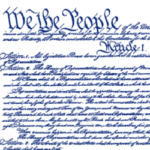This unit focuses on the remarkable historical figures who have embodied human progress and innovation throughout world history. Students will delve into the lives and achievements of influential individuals, exploring their contributions in areas such as science, art, and social reform, cultivating a deep appreciation for the transformative power of individuals in shaping our world.
Article V and the 27 Amendments – Module 15 of Constitution 101
With the Constitution, the Founding generation created the greatest charter of freedom in the history of the world. However, the Founding generation did not believe that it had a monopoly on constitutional wisdom. Therefore, the founders set out a formal amendment process that allowed later generations to revise our nation’s charter and “form a more perfect Union.” They wrote this process into Article V of the Constitution. Over time, the American people have used this amendment process to transform the Constitution by adding a Bill of Rights, abolishing slavery, promising freedom and equality, and extending the right to vote to women and African Americans. All told, we have ratified 27 constitutional amendments across American history. Learning objectives: Describe the reasons that the Founding generation included a formal process for amending the Constitution;
explain how the Constitution’s amendment process works, and why the founders made it so hard to amend the Constitution; identify the key periods of constitutional change in American history and outline factors that drive successful pushes to amend the Constitution; describe all 27 amendments to the U.S. Constitution.
Separation of Powers and Federalism – Module 6 of Constitution 101
When crafting the Constitution, one of the central concerns of the Founding generation was how best to control government power. With the new Constitution, the Framers looked to strike an important balance—creating a new national government that was more powerful than the one that came before it while still protecting the American people’s most cherished liberties. They settled on a national government with defined but limited powers. Instead of placing authority in the hands of a single person (like a king), a small group of people (like an aristocracy), or even the whole people (like a direct democracy), the Framers divided power in two ways. At the national level, the Framers divided power between the three branches of government—the legislative branch, the executive branch and the judicial branch. This process of dividing power between different branches of government is called the separation of powers. From there, the Framers further divided power between the national government and the states under a system known as federalism. In this module, students will explore the key functions of the different parts of government and the role that the Constitution plays in controlling government power.
Landmark Supreme Court Cases
In a partnership with the National Constitution Center, Khan Academy talked to constitutional scholars about ten of the most significant Supreme Court cases in history. Teachers can use this lesson as a supplemental resource during their Supreme Court unit to show how constitutional scholars can debate the outcomes of Supreme Court cases, as well as the impact these cases have had on the United States.
The Bill of Rights
In this series of videos, students will hear from constitutional scholars such as Professor Tracey Meares of Yale University, Professor Orin Kerr of George Washington University, Dean Erwin Chemerinsky of Berkeley Law, and Michael McConnell, the director of the Stanford Constitutional Law Center. In these videos, two scholars discuss their interpretations of the amendments, often giving different points of view and interpretations.
The Bill of Rights in Modern Times
In this lesson, students will learn about the individual rights that are included in the Bill of Rights and current issues relating to them. Students will use C-SPAN Classroom’s Constitution Clips to explore what each of these rights mean and determine how these rights apply to current events in America. This lesson works well with classes with one-to-one devices or in flipped classrooms.
Constitution Clips
C-SPAN’s Constitution Clips makes the U.S. Constitution come alive by providing teachers and students with video clips from C-SPAN’s Video Library of the Constitution in action.
Constitution of the United States with Index and the Declaration of Independence, Pocket Edition

This is the 25th pocket edition of the complete text of two core documents of American democracy, the Constitution of the United States (with amendments) and the Declaration of Independence. The resolution calling for the ratification of Constitutional Convention is also included. A topical index to the Constitution is provided. (House Document 112-29, 2012)
Roe v. Wade (1973)
This case summary provides teachers with everything they need to teach about Roe v. Wade (1973). It contains background information in the form of summaries and important vocabulary at three different reading levels, as well a review of relevant legal concepts, diagram of how the case moved through the court system, and summary of the decision. This resource also includes six classroom-ready activities that teach about the case using interactive methods.
Civic Action and Change (Lesson Plan and Powerpoint)
Students explore examples of civic action and change by looking at the efforts in four movements in the 20th century; women’s rights, disability awareness, Native American rights, and migrant worker rights. Through these examples, student will describe the process of civic action through the I AM chart (Inform, Act, Maintain).